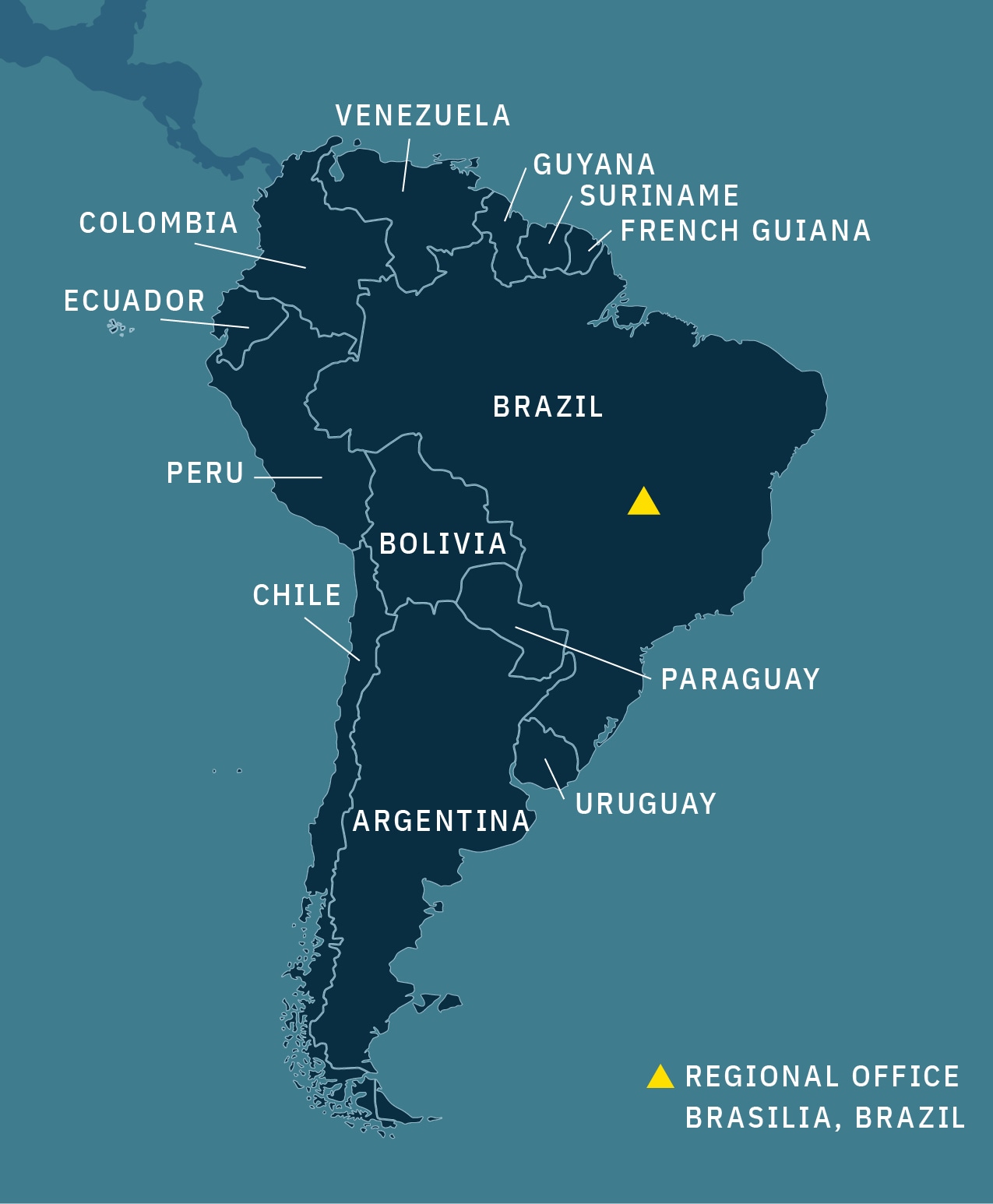CDC’s South America Regional Office
At a glance
Established in 2020, U.S. Centers for Disease Control and Prevention’s (CDC) South America Regional Office (SAMRO), located in Brasilia, Brazil, strengthens and expands CDC’s historically limited footprint in the region. U.S. CDC aims to advance regional health security and is working with partners to enhance early warning systems for health threats, detect changes in disease patterns, modernize data for public health action, support strong laboratory systems, expand the public health workforce, and respond effectively to public health emergencies.
Overview
The South America region covers the entire continent of South America. The region, which is home to approximately 427 million people, is served by CDC SAMRO based in Brasilia, Brazil. SAMRO supports CDC staff placed in Argentina and Ecuador. In addition, CDC has one country office in the region located in Brazil.
CDC historically had a small footprint in South American countries in the region. However, through a variety of collaborations, CDC programs have made progress on public health issues including, but not limited to, Zika, HIV/AIDS, tuberculosis, malaria, influenza, vaccine-preventable disease, foodborne and waterborne diseases, and high consequence pathogens. Over the years, there has been major progress in the control of these threats. However recent issues, such as economic and humanitarian crises, have led to considerable challenges to public health systems across the region. In addition to personnel in the region, subject matter experts at CDC headquarters in Atlanta, GA, provide technical support to these offices, as well as to partners across the region.

-
- Argentina
- Bolivia
- Brazil
- Chile
- Colombia
- Ecuador
- *French Guiana
- Guyana
- Paraguay
- Peru
- Suriname
- Uruguay
- Venezuela
*Territory of France
Key Areas of Focus
Reflecting U.S. CDC’s Global Health Strategy, SAMRO is focused on responding to health threats in the region including:
- Antimicrobial resistance
- Changing ecosystems
- Declines or plateaus in immunization rates
- Emerging diseases, including respiratory, zoonotic and vector-borne disease
- Humanitarian crises
- Misinformation and lack of public trust
- Travel and migration issues
- Urbanization and habitat loss
U.S. CDC and partners are collaborating to:
- Provide early warning for health threats
- Detect changes in disease patterns, including the emergence or re-emergence of pathogens
- Modernize health information and disease surveillance systems
- Use data for public health action
- Strengthen laboratory quality systems
- Upskill and expand the public health workforce
- Respond effectively to public health emergencies
- Prevent and control disease